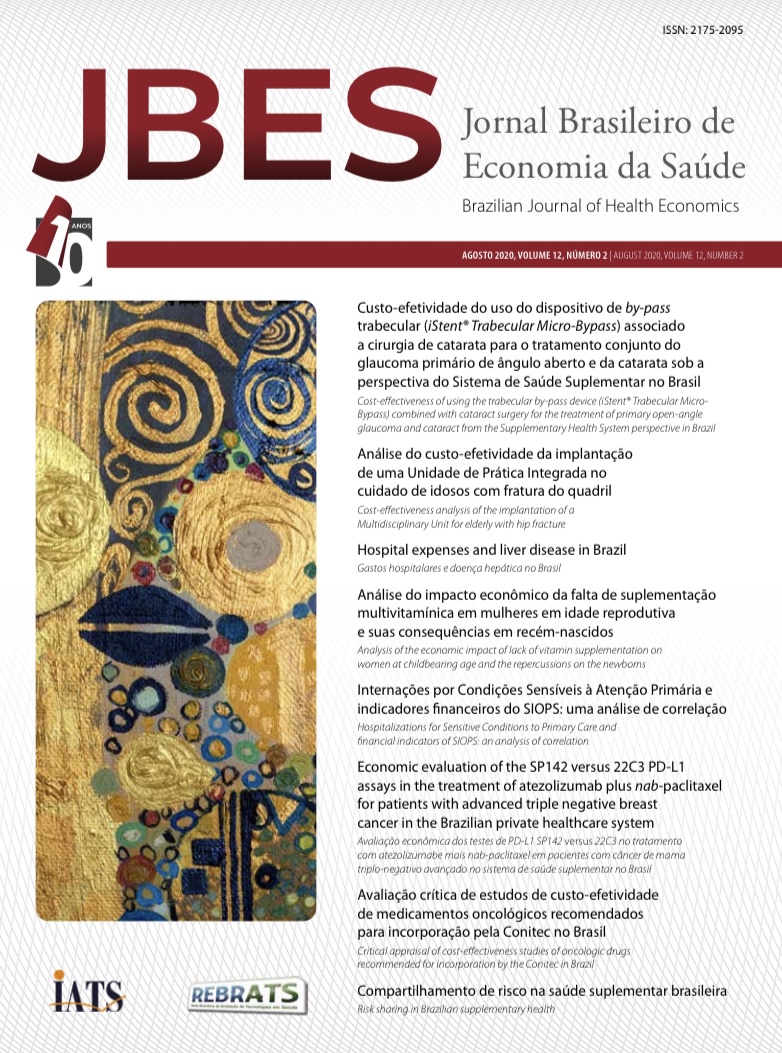Cost-effectiveness of using the trabecular by-pass device (iStent® Trabecular Micro-Bypass) combined with cataract surgery for the treatment of primary open-angle glaucoma and cataract from the Supplementary Health System perspective in Brazil
DOI:
https://doi.org/10.21115/JBES.v12.n2.p109-20Keywords:
cataract, open angle glaucoma, surgery, cost analysis, cost-effectivenessAbstract
Objective: To evaluate whether the incorporation of the iStent® Trabecular Micro-Bypass implant is cost-effective for the treatment of primary open-angle glaucoma (POAG) in patients undergoing cataract surgery from the perspective of the supplementary healthcare system in Brazil. Methods: Na analytical Markov model was developed and costs were obtained from the Brazilian supplementary health perspective (direct medical costs). Effectiveness was measured in “progression free life years (PFLY)”. The time horizon was the average life expectancy of the Brazilian population. Data were obtained through review and critical analysis of the literature. The base case was: glaucomatous patients with cataract who underwent isolated cataract surgery and continued use of anti[1]glaucomatous eye drops. We tested whether incorporating iStent® Trabecular Micro-Bypass in this scenario would be cost effective. The outcome measure was the incremental cost-effectiveness ratio (ICER: R$/PFLY). We performed univariate and probabilistic sensitivity analyses to test the robustness of the model. Results: Incorporating the iStent® Trabecular Micro-Bypass increases initial costs but improves disease control, making glaucoma stable longer and reducing future costs due to disease progression. The ICER was R$ 5,491.99/PFLY. The model was robust in sensitivity analyses. Conclusion: This analysis suggests that the incorporation of the iStent® Trabecular Micro-Bypass combined with cataract surgery would be cost-effective for joint cataract and POAG treatment in the supplementary health setting in Brazil.






